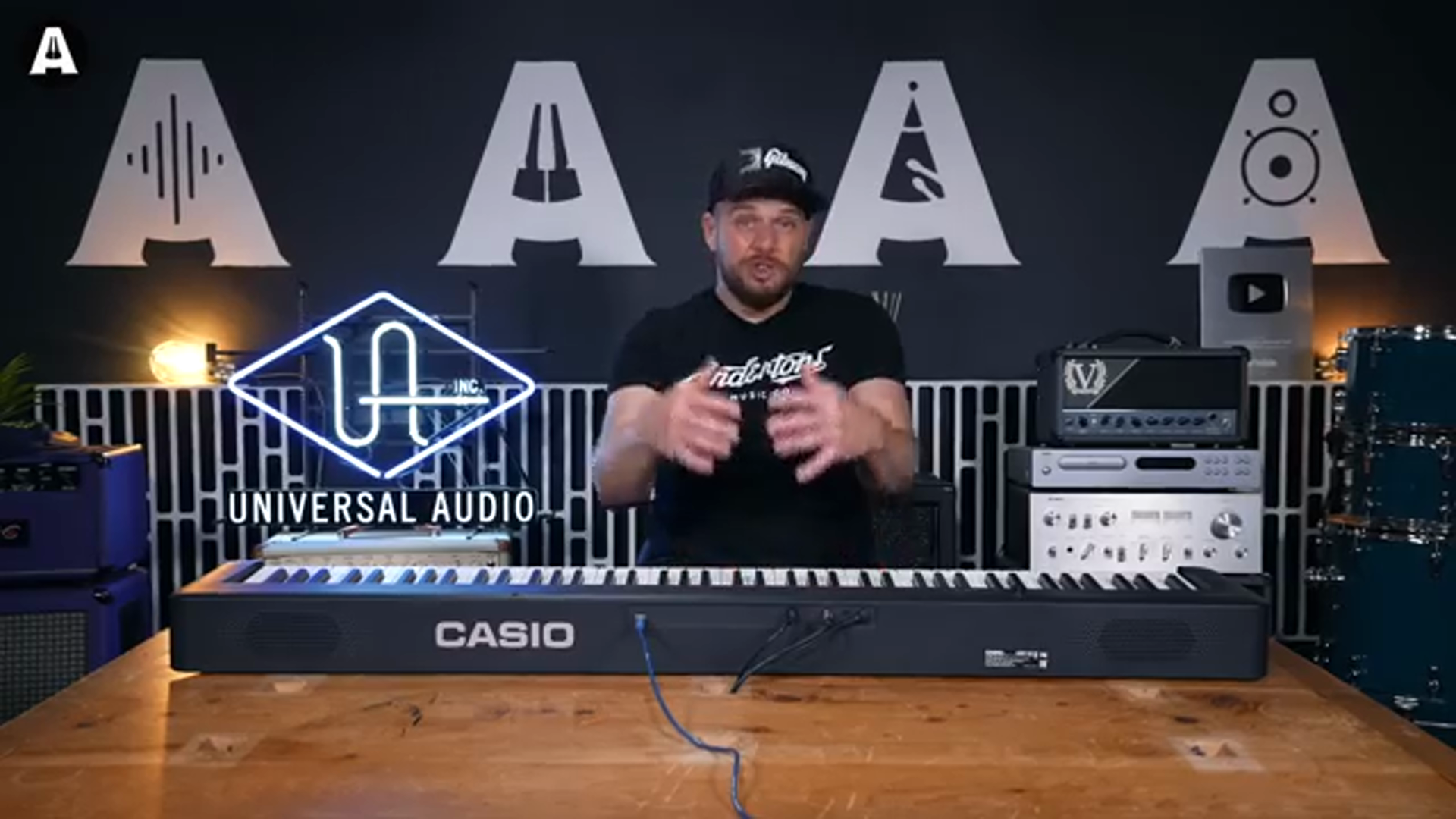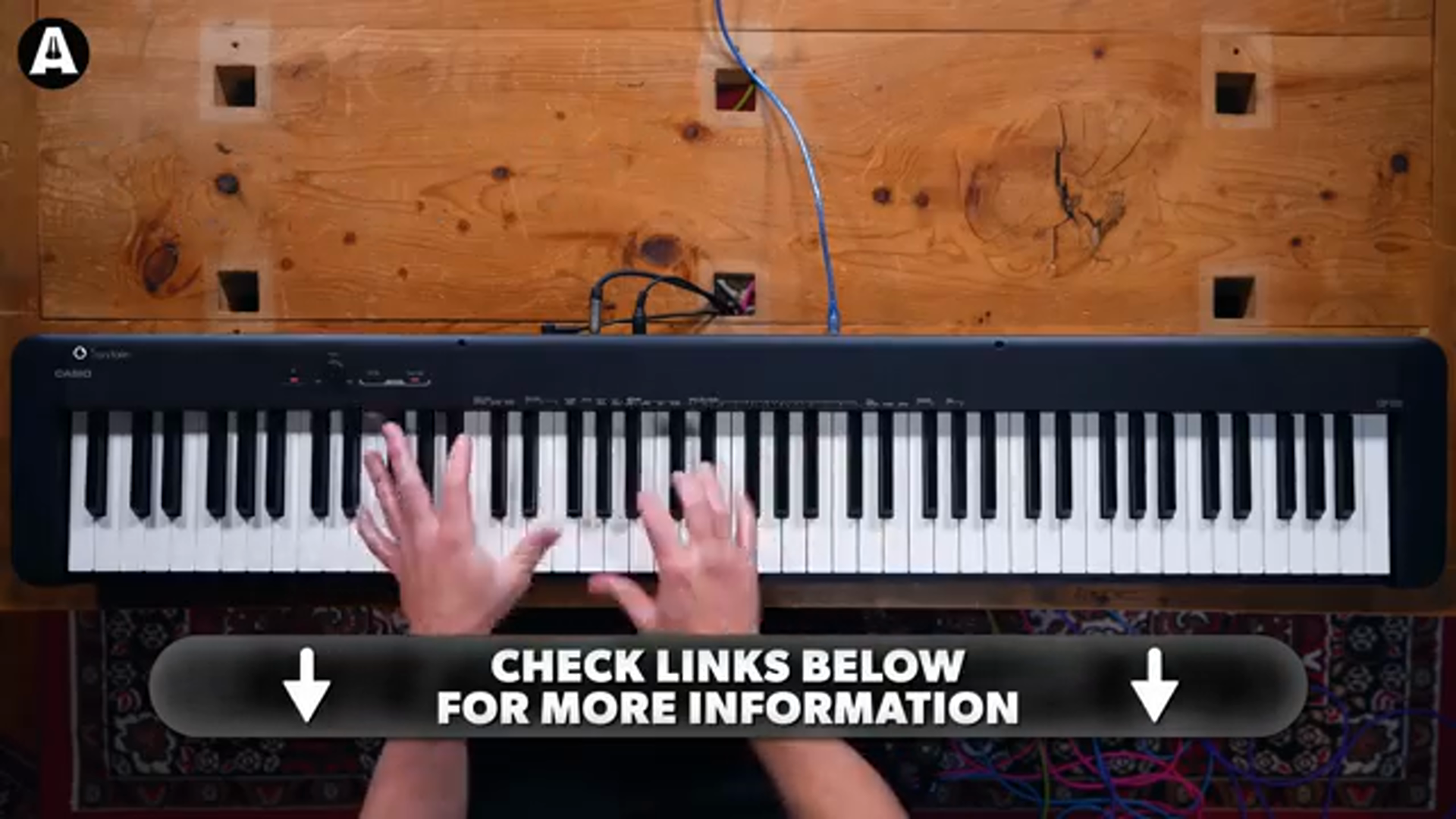AndertonsKeyboardDept takes us on a groove-infused journey through the power of music theory, using one iconic song as the ultimate teaching tool. Jack Duxbury breaks down how Bill Withers’ ‘Just the Two of Us’ is a master class in jazz chords, two-five-one progressions, and more, all while jamming on the Casio CDP-S110. Whether you’re into lo-fi beats or jazz standards, this one’s got the goods.

25. June 2025
RILEY
AndertonsKeyboardDept Delves Into Music Theory Magic
Kicking Off with a Classic
Jack Duxbury from AndertonsKeyboardDept opens up the video with the promise of schooling us on music theory using a true classic. While standing in the cozy settings of Andertons TV, Jack reminisces about a lesson he learned back in the day. A friend named Will Shackleton, an impressive player whom Jack looked up to, introduced him to Bill Withers’ ‘Just the Two of Us.’ Initially mistaken for a Will Smith jam, Jack eventually delved into the depths of the original and discovered its hidden wealth of musical wisdom. It’s a tune that might just sound like your grandma’s radio hit, but for Jack, it’s been a go-to jam when he’s got to throw down some jazzy vibes on the spot. He’s promising to unravel how this one track is packed with major, minor, and dominant seven chords which are just what the doctor ordered for any aspiring musician. Expect Jack to whip out the trusty Casio CDP-S110 and show us just how much fun you can squeeze out of those 88 keys.

"I've got to go away and I thought I'd leave you with a few lessons."
The Chord Conundrum

"Whenever there's a number involved it's referring to a degree in the scale."
Diving headfirst into the heart of the song, Jack starts dissecting the complex chord structure of ‘Just the Two of Us.’ This track isn’t just a random collection of notes; it’s a well-calculated lesson in the intricate world of chords. We’re talking major sevens, dominant sevens, and minor sevens—the whole shebang. If that sounds like your music theory nightmare, don’t sweat it. Jack’s here to make sense of it all, like sorting through a pile of mixtapes to find that perfect beat. He walks us through the C major seven, B dominant seven, and up into a groovy E minor seven. And just when you think you’re lost in the sauce, Jack throws in the two-five-one progression—a jazz staple that may just become your new best friend for those lo-fi hip-hop beats. It’s all about understanding how these chord progressions lay the groundwork for something bigger, like building your favorite taco with all the fixings. With each chord, Jack explains how to voice them correctly and even offers some clever tricks to spice them up.
Spicing Up the Groove
So you’ve got the basics down, now let’s add some flavor. Jack takes what’s already a flavorful tune and tosses in some hot sauce. Introducing chromatic chords into the mix, Jack demonstrates how to take the already compelling chords and make them pop like street food in a bustling market. By adding these chromatic transitions, the song takes on a new dynamic that keeps everything fresh and exciting. It’s like finding that secret ingredient that takes your chili from mild to high-octane. Jack’s got the kind of insights that make you want to rethink every pop song you’ve ever played.

"And you hear that all the time in lo fi hip hop music at the moment."
Fattening Up Those Chords

"You see what I mean? You can start building up the layers on this skeleton."
Into the thick of it, Jack ramps up the intricacy by showing us how to build on those chords. If you thought you knew what an E minor nine sounded like, think again. Jack throws in more ‘fat’ with layers that would make a subwoofer blush. Extending beyond the basic chord, he layers additional notes like a high-stakes game of Jenga. You can almost hear the city streets echoing with these soulful extensions. Jack describes how adding extra notes can create a richer, fuller sound that wraps you up like a worn-in hoodie on a windy Chicago day. He highlights how these additional notes transform a skeletal track into something robust, colorful, and ready for any gigging scenario you might stumble into. If you’re digging for those authentic D’Angelo vibes, Jack’s got you covered with insights that seem less like theory and more like a tasty street food hack.
Jammin' and Jazzin'
It’s not all about playing by the rules. Jack encourages us to break free and experiment. He throws a few curveballs teaching us how to creatively stretch our thumbs over the octave line, giving those chords extra soul. The power of pushing boundaries is front and center—Jack pulls back the curtain on how jazz isn’t just a genre, but an attitude. By adapting techniques like stretching your thumb, moving your body, and playing with atypical finger positions, you manage to inject soul and personality into your playing. Jack’s enthusiasm is infectious; you can almost feel the energy of a late-night jam session creeping through the screen, urging you to just try things out and see where the music takes you. If you’re itching to break norms and innovate, Jack’s guidance is like having a seasoned pro showing you the ropes in a smoky jazz club.
Take It Away
As the video winds down, Jack wraps things up with a final flourish. He revisits the core ideas and reminds us that expanding our musical palette is all about practice, patience, and a touch of bold experimentation. It’s not just about understanding the mechanics but feeling the music like a breeze whipping through a crowded alleyway. Jack underscores the importance of exploring new pathways even within familiar tunes, and just rolling with it. That’s how you turn a classic track into your unique statement piece. With a nod and a promise for more in-depth explorations, he signs off, leaving us inspired and a bit more daring in our musical journeys. And of course, he leaves us grooving with a casual jam that embodies everything he’s just taught us—a fitting end to an educational ride through the world of sophisticated yet street-savvy chord wizardry.
Latest articles
Watch on YouTube:
https://www.youtube.com/AndertonsKeyboardDept
Links from AndertonsKeyboardDept:
Sponsored links:
If you purchase via these links, we may earn a small commission – at no extra cost to you.
🔗 Check price on Amazon